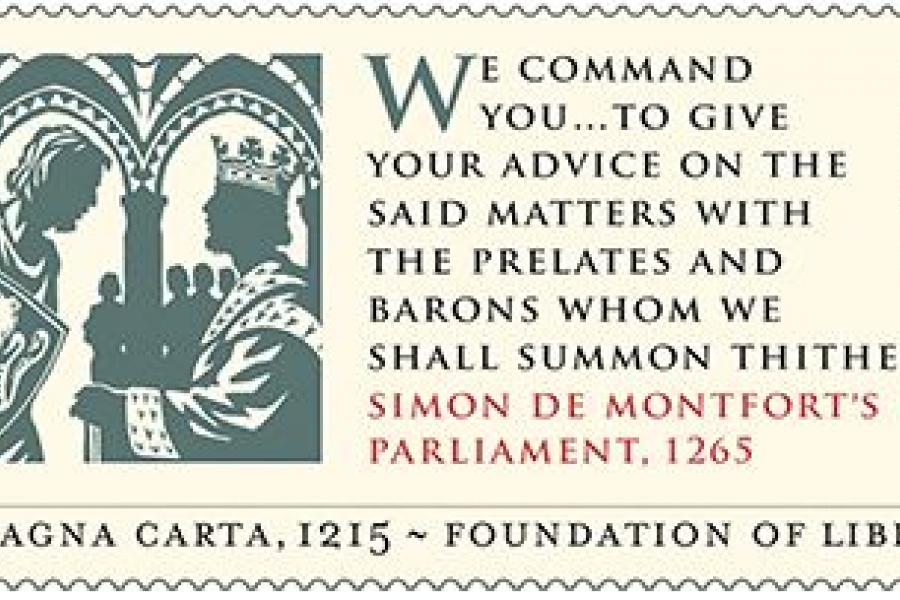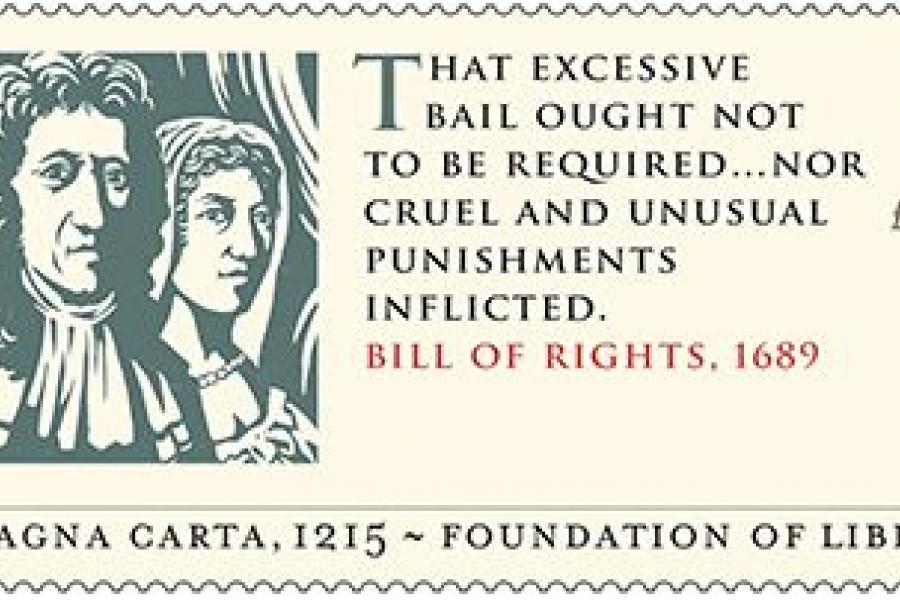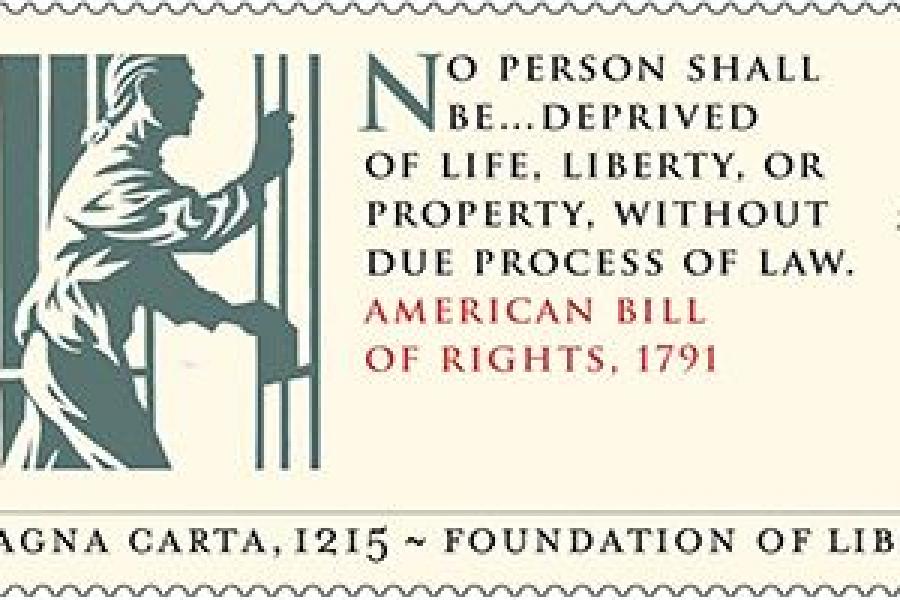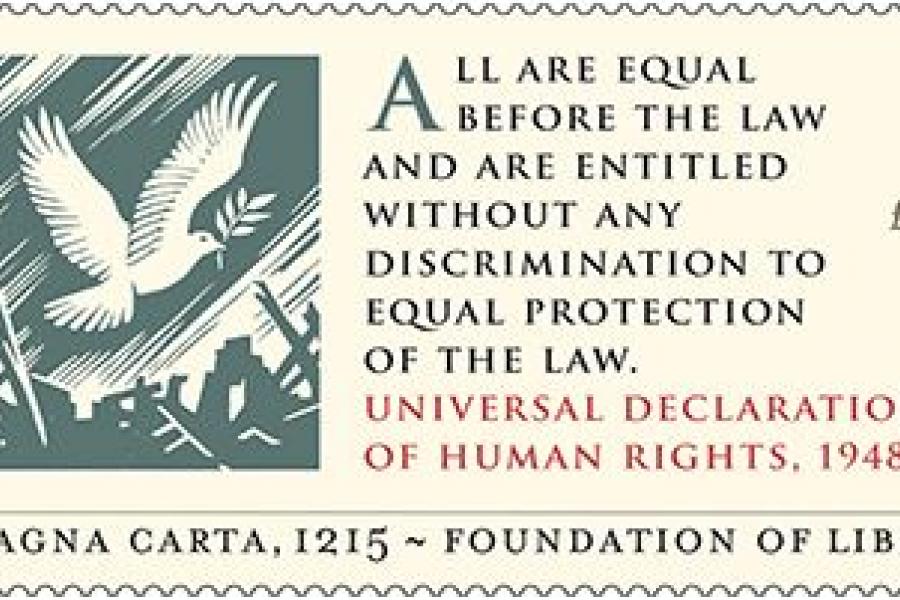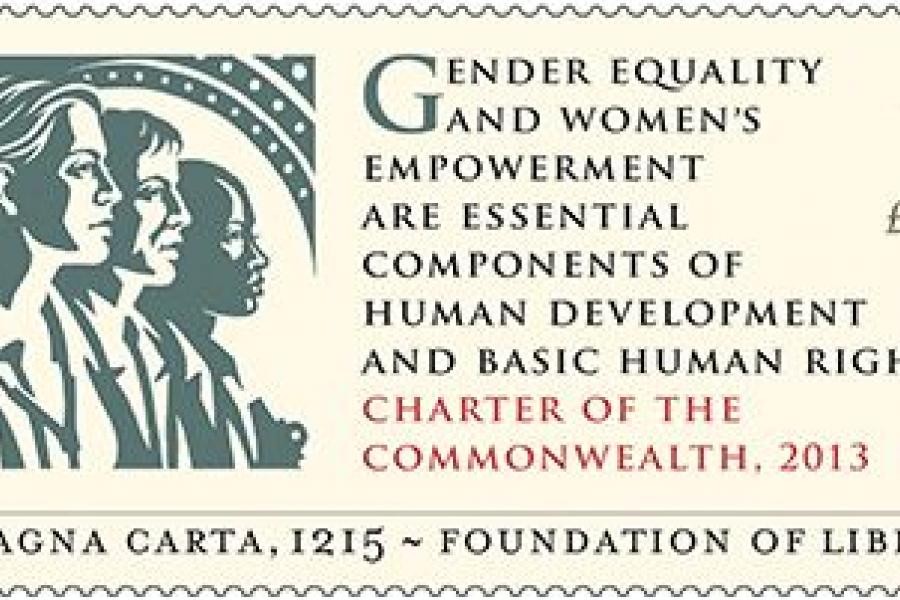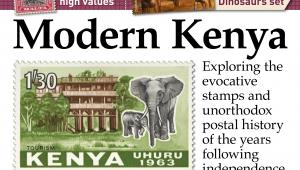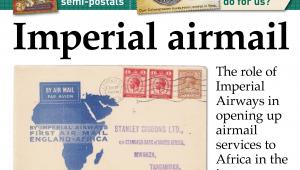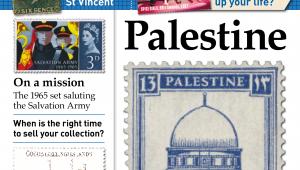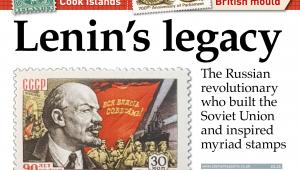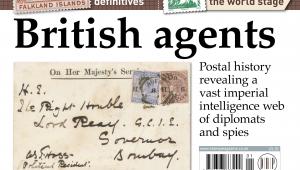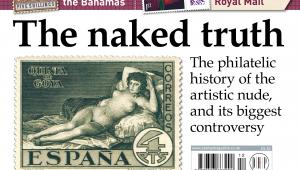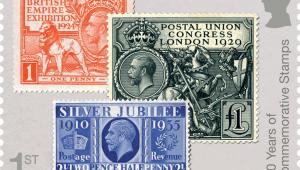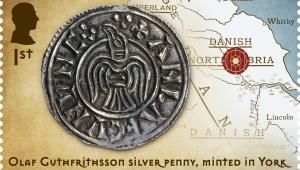Magna Carta
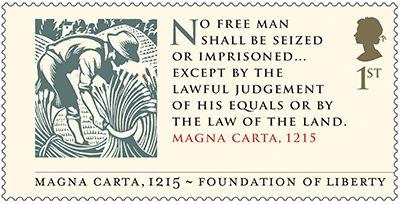
The 800th anniversary of Magna Carta, a foundation stone of the rule of law in England and around the world, is being marked by a special stamp issue on June 2.
Rather than concentrating solely on the treaty itself, the set of six stamps, subtitled ‘Magna Carta 1215: Foundation of Liberty’ also features five other key civil liberties and human rights documents which have been inspired by it.
Each design features a quote from the document in question alongside a simple woodcut image.
Produced in consultation with the Magna Carta 800th Committee, which is coordinating this year’s commemorations, the issue was designed by Howard Brown, with woodcut illustrations by Andrew Davidson, and printed in litho by International Security Printers.
1st class Magna Carta, 1215
Magna Carta (which means simply Great Charter) was reluctantly granted by King John of England at Runnymede on June 15, 1215, as a practical solution to a political crisis. It was effectively a peace treaty between the King and the most powerful barons in his realm.
Written in Latin on a single parchment and comprising 63 clauses, Magna Carta established for the first time that the monarch was subject to the law, rather than above it.
The charter looked after the interests of the nobility rather than the common people. Nearly a third of the original text was dropped or substantially rewritten within 10 years, and almost all the remaining clauses have been repealed by Parliament because they are not relevant to modern times.
However, Magna Carta remains a cornerstone of the uncodified British constitution. Its principles are also echoed in other countries’ constitutions, and it remains a potent rallying cry against the arbitrary use of power.
The stamp reproduces the clause stating that ‘No free man shall be seized or imprisoned except by the lawful judgement of his equals or by the law of the land.’
1st class Simon De Montfort’s Parliament, 1265
Convened in January 1265, this was the first English parliament to which burgesses (representatives of towns) were summoned, in addition to the major landowners and bishops.
It was established in the name of the King Henry III, but at the instigation of Simon de Montfort, the French-born Earl of Leicester who effectively ruled England, establishing the idea of a parliament with a wide representative base and more power than the monarch.
The stamp quotes the summons to the burgesses: ‘We command you to give your advice on the said matters with the prelates and barons whom we shall summon thither.’
£1.33 Bill of Rights, 1689
Enacted in December 1689, 40 years after King Charles I had been executed by Parliament and a few months after King James II had been deposed by the Glorious Revolution, the Bill of Rights effectively made Parliament sovereign in Britain.
It laid out parliamentary rights such as free elections and freedom of speech, and some individual legal rights, including ‘That excessive bail ought not to be required, nor cruel and unusual punishments inflicted.’
£1.33 American Bill of Rights, 1791
Inspired by its British namesake, the US Bill of Rights is the collective name afforded to the first 10 amendments to the United States constitution, laying out freedoms which had not explicitly been stated in 1787.
Ratified in 1791, it guaranteed freedom of religion and speech, the liberty of the press, the right to petition and bear arms, the right to trial by an impartial jury and immunity against arbitrary arrest and excessive punishment.
The stamp’s quote is: ‘No person shall be deprived of life, liberty or property, without due process of law.’
£1.52 Universal Declaration of Human Rights, 1948
Adopted by the United Nations in December 1948, in response to atrocities committed during World War II, this was the first global expression of rights to which all human beings are entitled, and has become a significant component of international law.
Drafted by a Commission chaired by Eleanor Roosevelt, it laid down individual, social, political, economic, spiritual and cultural rights, and bound them into membership of the UN.
The stamp reproduces the statement that ‘All are equal before the law, and are entitled without any discrimination to equal protection of the law.’
£1.52 Charter of the Commonwealth, 2013
Adopted in December 2012 and formally signed by Queen Elizabeth II in March 2013, the Charter of the Commonwealth is an attempt to bring together the values that unite its member states, which currently number 54.
It enshrines 16 core beliefs relating to democracy, the rule of law, human rights, gender equality, tolerance, freedom of expression, health, education, protection of the environment and international peace.
The quote selected for the stamp focuses on one of these: ‘Gender equality and women’s empowerment are essential components of human development and basic human rights.’
OTHER PRODUCTS
Written by medieval historian Professor Nigel Saul, the presentation pack provides an insight into the circumstances that led to the drawing up of Magna Carta, explores what happened after its ratification, and puts the themes of the other stamps in context.
Besides a standard first day cover, there is a coin cover in a limited edition of 10,000, which comes with a £2 coin specially struck by the Royal Mint and a poster reproduction of Magna Carta with a translation into English.
PRICES
Set of 6 stamps £6.96
Presentation pack £7.50
Stamp cards £2.70
First day cover £8.83
Coin cover £15.95
VERDICT
COMMEMORATIVE WORTH 5/5
This is a major anniversary of one of the key developments in British history, and one with international repercussions
QUALITY OF DESIGN 3/5
The style of the stamps plays second fiddle to the sentiments expressed, which is a worthy approach
WOW FACTOR 1/5
Although it has subtle gravitas, the issue is perhaps too wordy to make an instant impact

